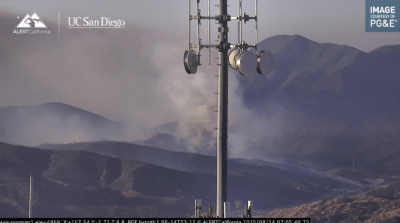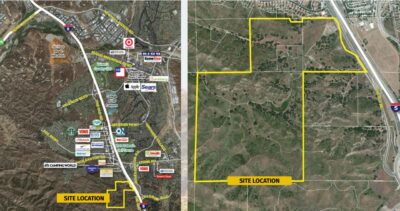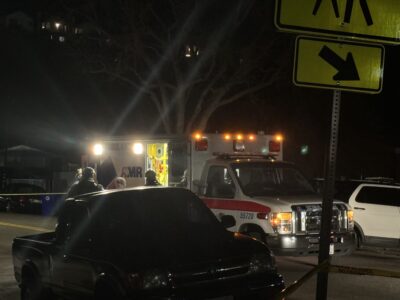California has a host of iconic locations we’ve all traveled to, probably more than once. In addition to the many iconic California landmarks like the Hollywood Sign, Yosemite National Park or the Golden Gate Bridge, there are other fun travel delights tucked away throughout the state, many you’ve probably never heard of, waiting for travelers to discover.
Lake County Diamonds
Tourist Information Center
255 N Forbes St., Lakeport 95453
Lake County diamonds, also called “moon tears,” are semi-precious stones of volcanic origin, found nowhere else in the world.
These gemstones are found only in the special, volcanic soils of Lake County, near Mt. Konocti, an extinct volcano on the south shore of Clear Lake.
According to a local tribe’s legend, a Pomo Indian chieftain and the moon fell in love. The moon could not stay with the chieftain because the people needed her to light the night sky and mark the seasons. She was so sad to leave the chieftain that she wept “moon tears.”
You can find “moon tears” along the roadsides and hiking trails of Lake County. Visit areas around Hidden Valley, Seigler Canyon Road, Perini Hill and Six Sigma Ranch. As you search, stay on public rights of way and do not trespass onto private property.
Lake County diamonds are not real diamonds, with a 7.8 rating on the Moh’s hardness scale compared to a 10 for a real diamond. The stones are often faceted by local jewelers and crafted into jewelry.
Stones range in color from clear to shades of red, pink, yellow and lavender.
Lake County offers rockhounds a chance to find onyx, obsidian, cert, travertine, jade and other stones.

Shadowbrook Restaurant
1750 Wharf Rd., Capitola 95010
Info shadowbrook.wpengine.com
Shadowbrook Restaurant in Capitola is truly a destination restaurant in Santa Cruz County. Founded in 1947, Shadowbrook has been known for “romance in dining” since the day this unique restaurant opened.
The heart of Shadowbrook is a log cabin originally built as a summer home in the 1920s, and later enlarged by an English family, who added what is now known as the “Fireside Room,” with its hanging balcony and Swiss chalet decor. Eventually they sold the home to another family, who abandoned it a few years later.
When the restaurant’s original partners discovered the house in 1944, it stood in ruin. It took three years of work to restore the structure. Then they set about hacking a steep path out of the tangled underbrush, carrying every piece of furniture and equipment down the treacherous hillside.
In the autumn of 1947, redesigned, redecorated and with a dining capacity of 50, Shadowbrook opened for dinner. In 1958, the famous cable car was added to transport guests down the steep hillside to the restaurant. In 1972, new owners added the cupola entry and deck by the river, and replaced all furnishings with authentic antiques from the era of the original structure.
In 1978, current owners Ted Burke and his partner Bob Munsey purchased Shadowbrook. They expanded Shadowbrook’s dining areas and added new landscaping, a wine cellar and bakery.
With nearly 80 years of history, Shadowbrook is one of the most unique restaurants on the West Coast.
Shadowbrook is known for its food, but also its ambiance and its unique “hillavator.”
The restaurant has grown to seat 225, spanning seven rooms across five levels. Celebrities including Arnold Schwarzenegger and Clint Eastwood have taken the 65-second ride to Shadowbrook to enjoy steaks and fresh seafood.
World War II Radar Station: B-71
Redwood National and State Parks
Thomas H. Kuchel Visitor Center, 119441 Highway 101, Orick 95555
Info www.nps.gov/places/redwoodradarstation.htm
History buffs may want to head to Del Norte County near Klamath to visit a still-standing WWII radar station disguised as a farm. During the war, it contained some of the most sophisticated early-warning radar defense technology available.
The Klamath River Radar Station B-71, located near Klamath, is a rare, surviving World War II early-warning radar station.
The station is listed on the National Park Service’s National Register of Historic Places (NRHP No. 78000282).
Modern radar was a very new technology in the 1940s and radar stations like B-71 were the beginning of the U.S. early warning radar defense network.
As a result of the attacks on Pearl Harbor and the Aleutian Islands, the need to guard the American coastline on the Pacific Ocean became a priority after Japanese submarines shelled an oil refinery north of Santa Barbara on Feb. 23, 1942; Esteven Point in British Columbia, Canada, on June 20, 1942 and again at Fort Stevens, Wash., on July 21, 1942. On Sept. 9, 1942, a Japanese submarine-launched aircraft dropped incendiary bombs on Oregon forests roughly 40 miles north of the Klamath River.
To protect the Pacific Coast from further attacks, a network of 72 radar stations was proposed as part of a radar air defense network. Although only 65 stations were actually built, the network stretched from the Canadian border into Mexico.
Anyone may visit the site in a vehicle or by hiking to its trailhead. The site is reached from the pull-of at the WWII Radar Farmhouse Trailhead by walking along the short WWII Radar Farmhouse Trail.










